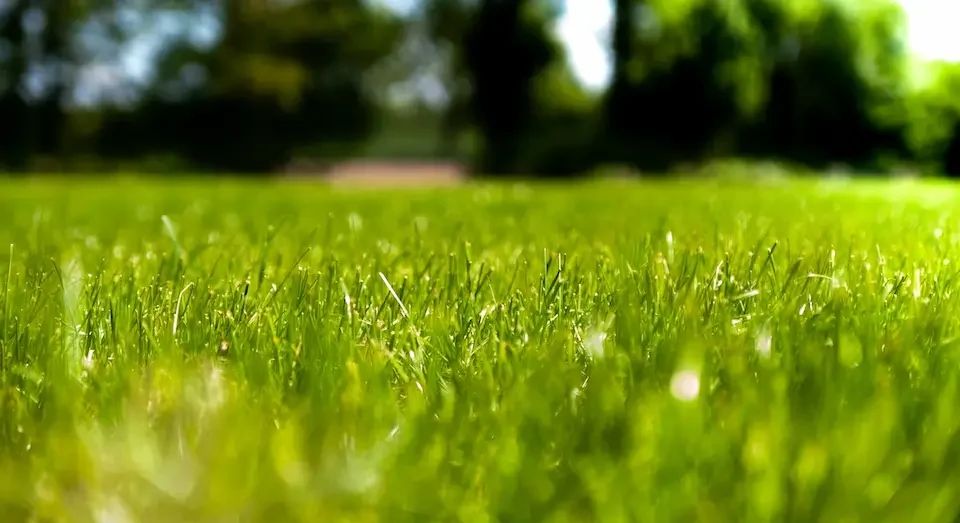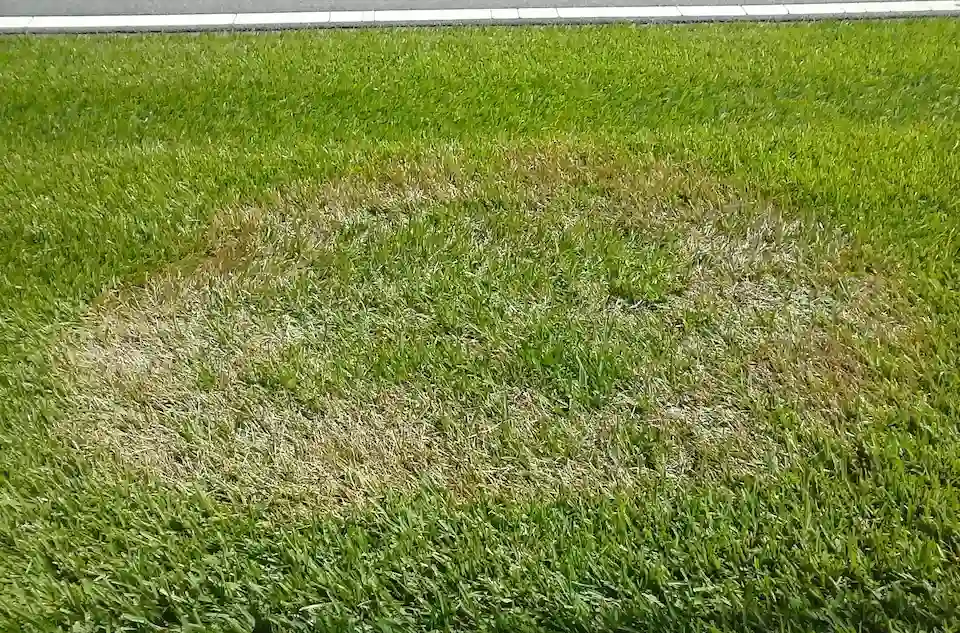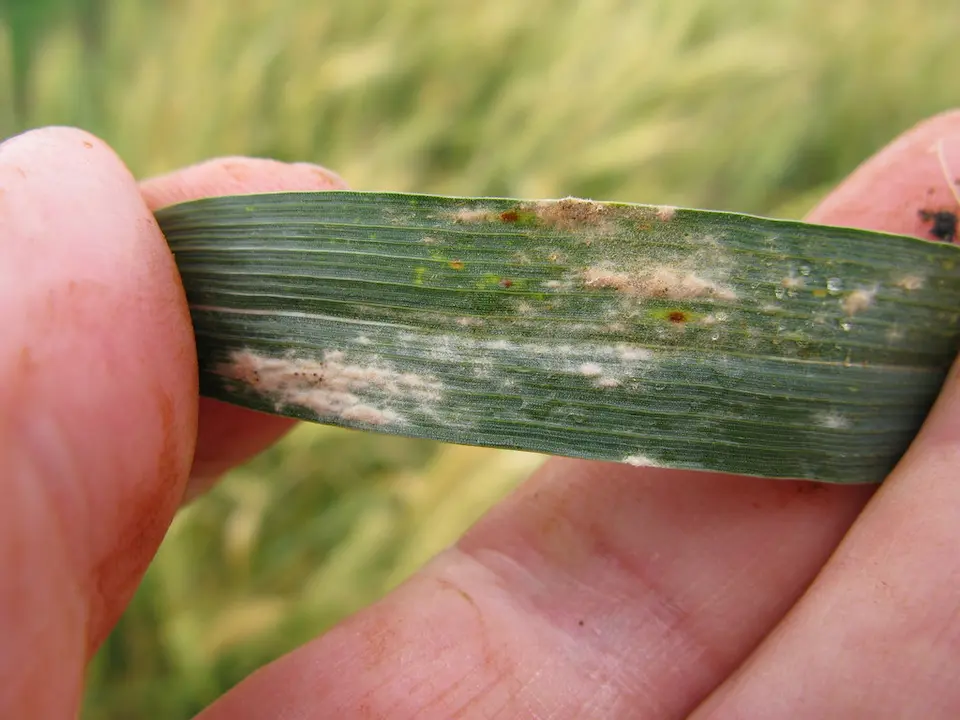When to Apply Fungicide to Lawn: Tips for Preventing Lawn Fungal Diseases

Maintaining a lush and healthy lawn requires more than just regular mowing and watering. One of the biggest threats to the health and beauty of a lawn is fungal diseases, which can cause discoloration, patchiness, and even death of the grass. Fungicides are an effective solution to preventing and treating these diseases, but timing is key.
Our experts in lawn fertilization and lawn care at TurfTitanz are sharing the best times to apply fungicide to your lawn, as well as other tips for preventing and managing fungal diseases to ensure a thriving and beautiful lawn year-round.
Understanding Lawn Fungal Diseases
A lawn fungal disease is a type of plant disease caused by fungi that can infect and damage the grass species and other organic matter in a lawn. Fungal diseases can manifest in different ways and affect the grass in various parts of the lawn.
Some common signs of a lawn fungal disease include:
- Discoloration of the grass such as brown spots.
- Thinning or death of the grass.
- The presence of fungus or mold on the grass.
- The appearance of circular patches on the lawn.
Lawn Fungus Types: What To Look For
Lawn fungus is a common problem that can occur in any type of lawn. Different types of lawn fungus can cause various symptoms and signs of damage to your lawn. Knowing the signs and symptoms of different types of lawn fungus can help you identify and treat the problem early on. Early treatment is key in order to prevent fungus from spreading and causing more damage to your lawn.
Brown Patch Disease

This type of fungus appears as circular brown patches or yellow grass that are up to several feet in diameter. The patches may have a darker ring around the outer edge and a lighter center. Brown patch is often caused by hot and humid weather conditions, and overwatering or poor drainage can also contribute to their development.
Dollar Spot
This fungus creates small, round spots of dead grass that are about the size of a silver dollar. These spots can merge and form larger patches of dead grass. Dollar spot is often caused by low soil moisture and a lack of nitrogen.
Powdery Mildew

This type of fungus appears as a white, powdery substance on the grass blades. It usually develops in areas with high humidity and low light levels and can be caused by poor air circulation.
Rust
This fungus appears as an orange or yellow powder on the grass blades. The grass may also have a rust-colored appearance. Rust is often caused by wet, humid conditions and low nitrogen levels in the soil.
Fusarium Blight
This fungus appears as a reddish-brown discoloration on the grass blades. The affected grass may also wilt and die. Fusarium blight is often caused by hot and humid weather conditions and overwatering.
Lawn Fungicides
Protective fungicides are chemical treatments used to prevent lawn diseases or stop fungi growth in lawns. They work by killing or inhibiting the growth of the fungus that causes the disease, thereby protecting the grass from further damage.
There are two main types of fungicides: contact fungicides and systemic fungicides.
Contact Fungicides
Contact fungicides work by killing the fungus on contact with the grass blades. They offer effective control of fungal diseases that are on the surface of the grass, such as powdery mildew and rust.
Systemic Fungicides
Systemic fungicides are absorbed by the grass and transported throughout the plant’s system, providing protection from the inside out. They are effective in controlling fungal diseases that are deeper in the grass, such as brown patch and dollar spot.
When to Apply Fungicide to Lawn
The best time to apply fungicide to your lawn depends on the type of fungal disease you are trying to prevent or control. For most diseases, it is recommended to apply fungicide before the disease becomes severe or widespread. Applying fungicide preventively can help to protect your lawn from disease before it takes hold.
For diseases like brown patch and dollar spot, it is recommended to apply fungicide in the spring and fall when the weather conditions are cool and humid, which is when these diseases are most likely to occur. For diseases like powdery mildew and rust, which are more prevalent in hot and dry weather, it is recommended to apply fungicide in the summer.
How to Apply Fungicide to Lawn
Before applying fungicide to your lawn, it is important to mow the grass and remove any clippings or debris from the area. This will help to ensure that the fungicide reaches the grass blades and soil where it is needed.
Next, follow the instructions on the fungicide label carefully, mixing the product with water and applying it evenly to the affected areas of the lawn. It is important to wear protective clothing, such as gloves and a mask when applying fungicide to avoid skin contact and inhalation.
After applying the fungicide, it is important to water the lawn lightly to help the product penetrate the soil and reach the grass’s roots. Be sure to follow the recommended waiting period before mowing or watering your lawn again to allow the fungicide time to work.
Preventing Lawn Fungal Diseases
Preventing lawn fungal diseases is an important part of maintaining a healthy and vibrant lawn. Fungal diseases can cause discoloration, thinning, and even death of the grass, leading to unsightly patches and a weakened lawn overall.
Maintain Proper Watering
Overwatering can create a moist environment that is conducive to fungal growth. It is important to water your lawn deeply but infrequently, allowing the soil to dry out slightly between watering sessions. Additionally, it is recommended to water your lawn early in the morning to allow the grass blades to dry out during the day.
Improve Soil Drainage
Poor soil drainage can create waterlogged conditions that promote fungal growth. To improve drainage, ensure that your lawn is properly graded, and consider adding compost or sand to the soil to improve its structure.
Mow Properly
Mowing too short can stress the grass and leave it more susceptible to fungal diseases. It is recommended to keep your lawn mower blade set to a height of 2-3 inches and to avoid removing more than one-third of the grass blade length during each mowing session.
Fertilize Appropriately
Proper fertilization can help to keep your lawn healthy and strong, making it more resistant to fungal diseases. It is important to choose a fertilizer with the right balance of nitrogen, phosphorus, and potassium for your lawn type and to apply it at the recommended rate and frequency.
Apply Fungicide Preventively
Fungicides can be applied preventively to protect your lawn from fungal diseases before they take hold. It is important to follow the instructions on the fungicide label carefully and to apply it at the recommended time and rate to ensure maximum effectiveness and safety.
Helping Prevent Resistance to Fungicides
Fungicides are an effective tool in preventing and treating lawn fungal diseases. However, repeated use of fungicides can lead to the development of resistance in the fungal population. Resistance occurs when the fungus becomes less sensitive or completely immune to the fungicide, rendering it ineffective.
To help prevent resistance to fungicides, there are several steps you can take:
- Rotate fungicides: Alternating between different types of fungicides with different modes of action can help to prevent resistance from developing. This is because different fungicides target different parts of the fungal cell, making it less likely for the fungus to develop resistance.
- Use fungicides only as needed: Applying fungicides only when necessary, such as in the case of an active fungal infection, can help to reduce the overall use of fungicides and decrease the likelihood of resistance developing.
- Apply fungicides at the correct rate and frequency: Applying fungicides at the recommended rate and frequency can help to ensure maximum effectiveness and reduce the likelihood of resistance developing.
- Monitor for signs of resistance: Regularly monitoring your lawn for signs of resistance, such as continued or worsening fungal infections despite fungicide treatment, can help you to identify the need for a change in fungicide or management strategy.
- Incorporate other disease management strategies: Incorporating other lawn care practices, such as proper watering, mowing, and fertilization, can help to reduce the overall reliance on fungicides and decrease the likelihood of resistance developing.
- Hire a professional lawn care company for regular maintenance: Hiring experts can be an effective way to prevent and manage lawn fungal diseases while minimizing the risk of fungicide resistance. Professional lawn care companies have the knowledge and expertise to identify and diagnose fungal diseases early on, which can help to prevent the need for excessive or repeated fungicide treatments.
Lawn Diseases and Fungicides FAQs
Can I apply fungicide to my lawn during the rainy season?
It is generally not recommended to apply fungicide to your lawn during the rainy season as excessive moisture can reduce the effectiveness of the fungicide. The rain can wash away the fungicide before it has time to be absorbed by the grass and soil, reducing its effectiveness. It is recommended to apply fungicide during dry weather conditions when the grass is not wet, preferably in the early morning when there is less wind and the air is cooler.
How often should I apply fungicide to my lawn?
The frequency of fungicide application depends on the specific fungal disease, the severity of the disease, and the type of fungicide being used. Generally, fungicides should be applied preventively before the onset of disease or at the first signs of infection. Some fungicides have a longer residual effect and may only need to be applied once or twice a season, while others may need to be applied more frequently. It is important to follow the instructions on the fungicide label carefully and consult with a professional if necessary to determine the appropriate frequency of application.
Can I use natural remedies to prevent and treat lawn fungal diseases?
Yes, there are several natural remedies that can be used to prevent and treat lawn fungal diseases. These include:
- Improving soil drainage and aeration to reduce moisture levels.
- Removing thatch and debris from the lawn to improve air circulation.
- Planting disease-resistant grass varieties.
- Applying compost or organic fertilizers to improve soil health.
- Using biological controls such as beneficial microbes to control fungal diseases.
Applying natural fungicides such as neem oil, copper sulfate, or baking soda.
Natural remedies may not be as effective as chemical fungicides, and it may take longer to see results. Consult with a professional lawn care contractor to determine the most effective treatment strategy for your specific lawn and fungal disease.
Keep Your Lawn Healthy and Free From Lawn Fungus With Lawn Care and Maintenance from Turf TitanZ
Transform your lawn into a lush, vibrant paradise with the help of Turf TitanZ. Our expert team of residential lawn care professionals is dedicated to helping you maintain a healthy, beautiful lawn that is free from fungal diseases. With our comprehensive lawn care and maintenance services, you can rest assured that your lawn is in good hands.
At Turf TitanZ, we understand that every lawn is unique, which is why we offer customized lawn care plans tailored to your specific needs. Our services include regular fertilization, aeration, weed control, and pest control, all designed to keep your lawn healthy and thriving. We also specialize in preventing and treating lawn fungal diseases, using the latest techniques and products to keep your lawn disease-free.
Don’t let lawn fungus ruin the beauty and health of your lawn. Contact us today to schedule a consultation and learn more about our services by calling (919) 562-0771 or filling out our contact form below.
